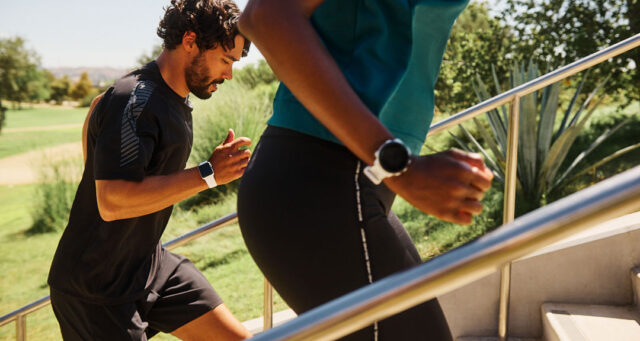Ready to pick up your pace? Speed can be a difficult thing to understand and improve upon, but there are a few ways you can address it. It may sound daunting to add any new components to your running regime, but a lot of the work around getting faster involves slightly tweaking what you already do.
Track and measure your runs
Knowledge is power! Measuring your distance, time, and pace gives you insight into your current status as well as your strengths and weaknesses as a runner. Thankfully the ASICS Runkeeper app takes care of managing all of that for you—plus with a Runkeeper Go™ subscription — you can compare your progress. if you start out like lightning and struggle through those last few miles, you probably need to focus on pacing and endurance. If you’re staying very consistent over months and seeing no improvement, maybe you’re keeping things too comfortable. As you collect these stats on your running behavior, you can set smart, specific goals for getting faster—like dropping your 5k pace by 10 seconds a mile. Put a challenge in front of you, and plan out a course for getting there.
Determine your personal success factors
Set yourself up for success. Lots of factors can influence the outcome of every run: time of day, weather, what we’ve eaten, our gear, the route we pick—the list goes on. Keep a running log that tracks all of these variables and examine how they impact your times (hint: the notes section at the end of logging a Runkeeper activity provides a convenient place to do this). The aim is to identify patterns among some of your best runs and work to replicate those scenarios. As an example, if you’re running your fastest pace in the morning after eating half of a banana, make that a core part of your running routine. No need to reinvent the wheel each time you hit the pavement!
Push yourself
Once you’re armed with knowledge and goals, you can better push yourself in your actual workouts. One of the key elements to getting faster is moving outside your comfort zone. Here are some ways to surprise your muscles and improve your speed.
Speed intervals
These types of workouts can be time-based or distance-based and have active recovery periods built-in. The point is to push yourself to a much faster pace than you’d be inclined to on a regular run, with the knowledge that you don’t have to sustain that pace for a long period of time. Hint: use your rest breaks here to actually rest. If you’ve taken the two minutes to jog slowly or walk, you’ll get more out of your speed intervals. Check out this workout to help increase your speed.
Strides
Save these speed bursts for the end of a run. Add these sprint intervals on a flat road or track to practice turn over, picking up the speed when tired, and proper form. These will simulate what it’s like to push through the finish line on race day when your legs are telling you to quit!
Tempo runs
The lack of rest breaks in these runs makes them pretty intense. The aim is to hold a steady pace, usually over a minute faster than your easy days, over a certain time period or distance. A tempo run should be longer than an interval distance, somewhere between 15 and 40 minutes in duration.
Run hills
A nice flat route can result in a great time, but it’s not going to improve your speed for race day. Hills provide a mental and physical challenge that will make you faster. Focus one of your runs each week around some hill work, or incorporate some steep climbs into your longer runs. While you don’t want to head for the mountains for hill repeats, you do want to find a hill that is moderately steep (4-6% incline). Use this hill repeats workout to help guide you. Your stronger quads, glutes, and lungs will thank you.
Keep it consistent and structured
Staying consistent with your workout routine from week to week can ensure you’re maintaining the gains made from day to day. Sure, you may be crushing those hills or rocking your track workout, but if you’re running 30 miles one week and just 5 miles the next, it’s going to knock you back a few steps. Make it a point to be as consistent as possible with the number of times you’re working out per week. Creating a training plan in the Runkeeper app, developed by ASICS running coaches, can take the guesswork out of getting to race day. You’ll know which days to push hard and which to rest, and can focus your energy on running fast!






